PART 7
By
Kathleen Marquardt
September 15, 2012
NewsWithViews.com
[Note: Part 6, “The Transect,” should be read before reading this article to get full understanding of SmartCode.]
One of the most fundamental requirements of a capitalist economic system—and one of the most misunderstood concepts—is a strong system of property rights. For decades social critics in the United States and throughout the Western world have complained that “property” rights too often take precedence over “human” rights, with the result that people are treated unequally and have unequal opportunities. Inequality exists in any society. But the purported conflict between property rights and human rights is a mirage. Property rights are human rights. -Arman Alchian
“The SmartCode is a form-based code that incorporates Smart Growth and New Urbanism principles. It is a unified development ordinance, addressing development at all scales of design, from regional planning on down to the building signage. It is based on the rural-to-urban transect rather than separated-use zoning, thereby able to integrate a full range of environmental techniques. Because the SmartCode envisions intentional outcomes based on known patterns of urban design, it is a more succinct and efficient document than most conventional codes.“ (To download SmartCode, go down to smartcode version 9.2 and click on it.)
The American Planning Association brags that their “definition emphasizes comprehensive planning that results in a unique sense of community and place, preservation of natural and cultural resources, of the expansion of transportation and housing choices beyond what we have now and we also emphasize the promotion of public health and healthy communities, which is an issue that has just begun to surface over the past two years.”[1] Understand that the “transportation and housing choices beyond what we have now” refer to walking, biking, rail and stack-em and pack-em housing. We have all those means of transportation now but we are not utilizing them as the APA and other Sustainable Development proponents would like because they are either expensive, impractical or unappealing to us. There is stack-em and pack-em housing already in large cities and in slum areas. Right now, most people chose what kind of housing they want and many chose single family homes in suburban (aka sprawl in Greenspeak) and rural areas -- anathema to Smart Growth promoters. Also we want to retain our individual freedom which negates being forced into communal housing with the associated communal living requirements of Smart Growth.
You may notice that they (Sustainablists, Commutarians) keep touting that people are moving from the rural and suburban areas into the cities at great rates “because they want the infrastructure and amenities available there.” I am not sure that people are moving into cities (yet) in any great numbers, but those groups, let’s call them Sustainablists, not only want to drive people into the cities (so they can be more easily controlled), and they are writing the planning to do just that. Looking at areas around the country, they are succeeding because they have established planning commissions in every city, town and county.
“The SmartCode is a form-based code, meaning it envisions and encourages a certain physical outcome -- the form of the region, community, block, and/or building. Form-based codes are fundamentally different from conventional codes that are based primarily on use and statistics -- none of which envision or require any particular physical outcome.”[2] Right, conventional codes, the codes used now, do not require all buildings, streets and towns to look alike.
“The SmartCode is a tool that guides the form of the built environment in order to create and protect development patterns that are compact, walkable, and mixed use. These traditional neighborhood patterns tend to be stimulating, safe, and ecologically sustainable. The SmartCode requires a mix of uses within walking distance of dwellings, so residents aren’t forced to drive everywhere. It supports a connected network to relieve traffic congestion. At the same time, it preserves open lands, as it operates at the scale of the region as well as the community.”[3] Go back and look closely at what was said: “. . . guides the form of the built environment, . . .” just as I said above, they are making all buildings the same.
And remember, in Part 6, The Transect, I quoted the the APA , “In transect planning, this range of environments is the basis for organizing the components of the built world: building, lot, land use, street, and all of the other physical elements of the human habitat. (emphasis mine)”[4]
Transfer of Development Rights (TDR)
“Local governments use TDR programs to mitigate the economic impact of land use regulations, specifically to compensate landowners for perceived partial takings (Johnston and Madison, 1997). This planning tool offers landowners a way to recapture some lost economic value when a property is downzoned[1] from residential use to agricultural use for preservation purposes.” Note the two phrases: “to compensate landowners for perceived partial takings” and “to recapture some lost economic value when a property is downzoned.” They are inferring that takings are a figment of the property owners’ imaginations and with the “recapture of some lost value” admitting that they are not going to compensate owners with the full value of their property.
Some of the things the SmartCode does:
•
“It utilizes a type of zoning category that ranges systematically
from the wilderness to the urban core.”[5]
In other words, it encompasses the entire land mass.
• “It enables and qualifies Smart Growth
community patterns that include Clustered Land Development (CLD), Traditional
Neighborhood Development (TNDTM), Regional Center Development (RCD), and
Transit-Oriented Development (TOD).”[6]
• “It integrates the scale of planning concern
from the regional through the community scale, on down to the individual
lot and, if desired, its architectural elements.”[7]
In other words, every aspect of development and they want to chose your
appliances also.
• “It integrates methods of environmental
protection, open space conservation and water quality control.
• “It integrates subdivision, public works
and Transfer of Development Rights(TDR) standards.
• “It encourages specific outcomes through
incentives, rather than through prohibitions.”[8]
The intention is to
make using SmartCode easy and standard codes difficult so that people
are inclined to take the path of least resistance -- not realizing what
it means for property rights and individual freedom. “Encouraging
specific outcomes” should scare the devil out of you. Why would
they want specific outcomes for every person in America?
SmartCode, being part of Sustainable Development, is an attack on property rights.
|
|
As I noted near the beginning of this article the APA brags that their “definition emphasizes comprehensive planning that results in a unique sense of community and place, preservation of natural and cultural resources, of the expansion of transportation and housing choices beyond what we have now and we also emphasize the promotion of public health and healthy communities, which is an issue that has just begun to surface. . . .” What the meaning is that humans will no longer own their own homes instead we will be herded into the “unique sense of community and place” which is the stack-em and pack-em Smart Growth communal habitats. The healthy communities are Commutarian, Sustainablist versions of healthy, but healthy for whom? Not for individuals who believe in free will, individual freedom and the right to private property. In these new “healthy communities” you will be told what is healthy and what is not and you will not be given the choice of deciding for yourself if you want to follow the leader. You think Bloomberg’s soda ban is draconian, just wait.
In Part 8 I will go deeper into SmartCode.
Click here for part -----> 1, 2, 3, 4, 5, 6, 7, 8,
Footnotes:
1.
American Institute of Certified Planners, Green Infrastructure, “Smart
Growth Codes,” Transcript p5, January 21, 2004.
2.
Center for Applied Transect Studies, SmartCode, p V.
3.
Ibid
4.
“Transect Planning,” Duany, Andres and Emily Talen. APA Journal,
Summer 2002, Vol. 68, No. 3, p.245.
5.
Center for Applied Transect Studies, SmartCode, p VIII
6.
Ibid
7.
Ibid
8.
Ibid
� 2012 Kathleen Marquardt - All Rights Reserved
Kathleen Marquardt has been in the freedom movement since before it was called that. She was founder and chairman of Putting People First, a non-profit organization combatting the animal rights movement. Her book, AnimalScam: the Beastly Abuse of Human Rights, was published by Regnery in 1993. Kathleen has been Vice President of American Policy Center since 2000 and is the Agenda 21/Sustainable Development expert for Rocky Top Freedom Campaign. She is a contributing writer and researcher for Freedom Advocates.
Website: www.rockytopfreedom.com
E-Mail: marquardtkathleen379@gmail.com



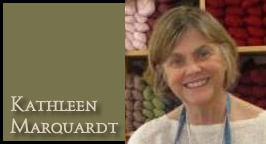
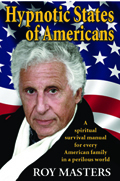
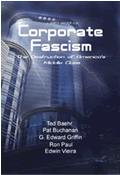
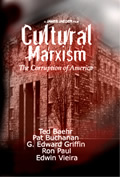
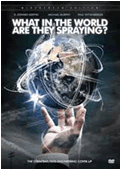
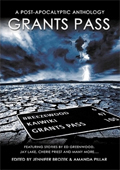




 Share
This Article
Share
This Article




